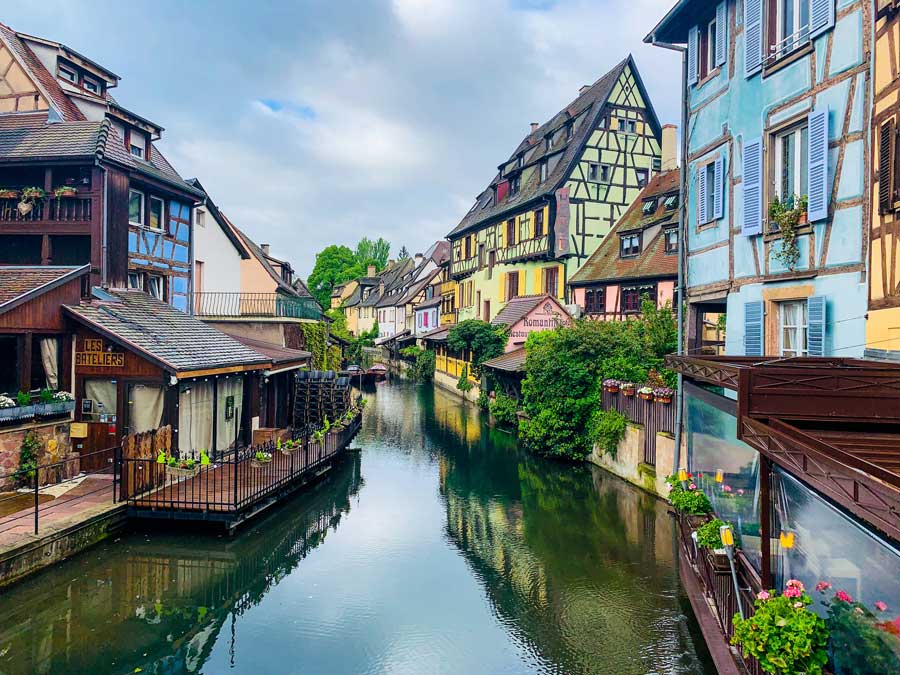I used to live here. This is Colmar, in the east of France, which was a huge shift from London, where I am from. It really is chocolate-box gorgeous, looking out and seeing the flat-bottomed boats punt past.
It is a region with a strong identity, a really individual ‘look and feel’, that is connected to the history, the geography, the climate, the traditions, the land, and the gastronomy. The coloured houses are very much part of that ‘look and feel’, and we need to travel back to the Middle Ages to understand the origin of the tradition.
As most people did not know how to read, a colour code enabled people to find their way around the villages more easily, with each colour representing a different trade. Emerald green for tailors, tanners and weavers, red for ironmongers, ochre for bakers and dark blue for carpenters and cabinet-makers.
I often think of Alsace and all the coloured houses when working with people who worry that their foreign accent is somehow going to ruin their presentation, or, at best, reduce their credibility when pitching a big idea. I reassure them that It doesn’t, and it won’t.
It is harder communicating with impact in a foreign language, and clarity is key, but it’s all too easy to get hung up on accent (im)perfection.
I do know – I can be my own worst critic when it comes to that, and perfectionism can instantly decrease your sense of worth, self-confidence and so on.
Actually, it’s better to embrace a foreign or regional accent, and just go for it. It’s better to slow right down so others can understand you easily in spite of your accent, which is part of who you really are; your authentic you. So, turn your individuality into a strength, drawing on your authenticity to help you communicate with more charisma. This is what people will remember!

